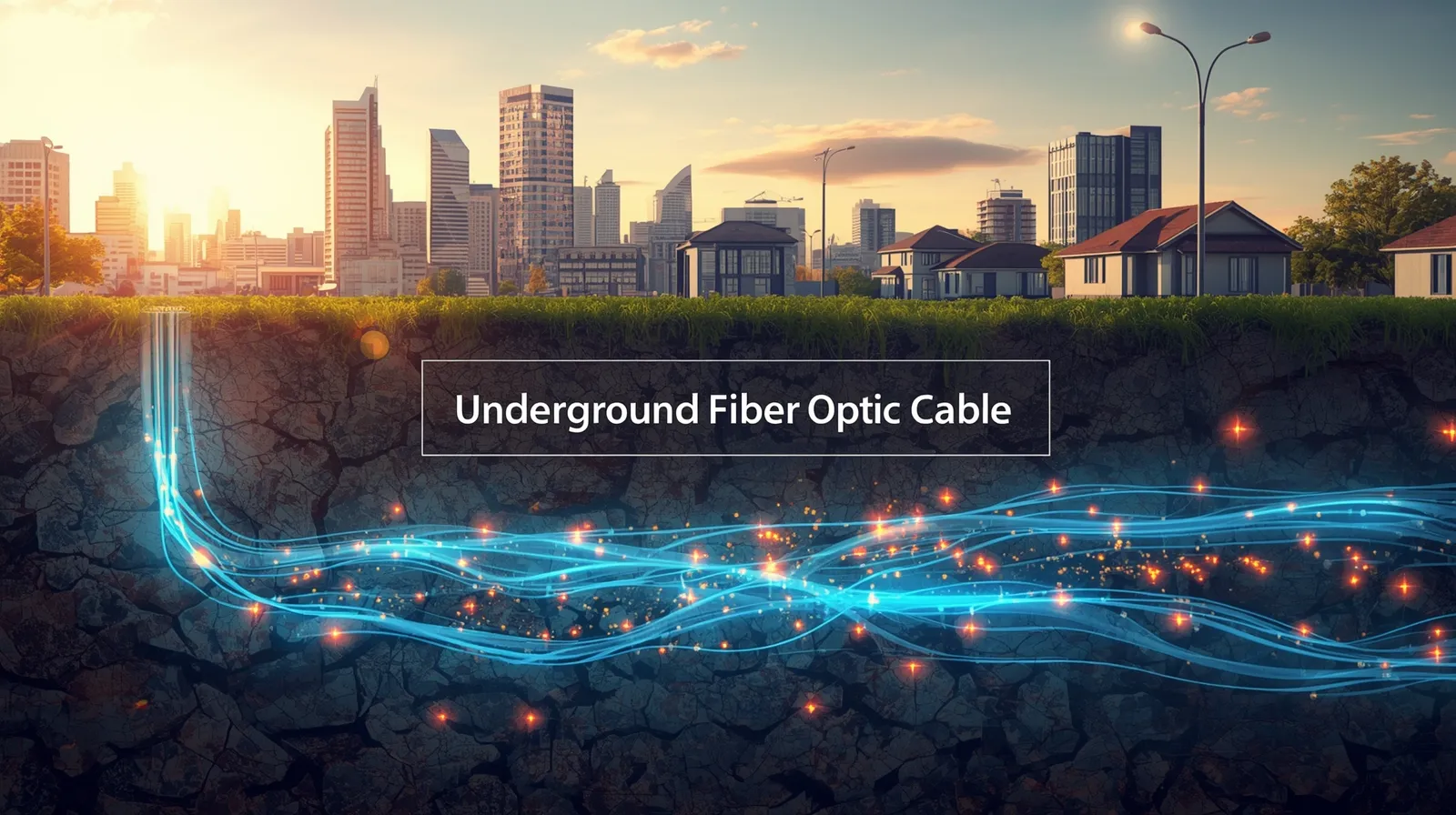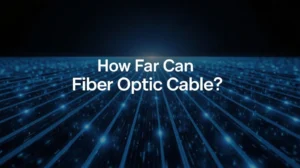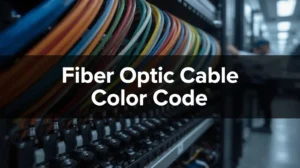An underground fiber optic cable is the invisible backbone of modern high-speed communication. It runs safely below the ground, protected from storms, wind, and external damage. These buried cables carry massive amounts of data at the speed of light, keeping cities, businesses, and homes connected. In this article, we’ll explain how underground fiber works, how deep it’s buried, why it’s safer than overhead wiring, and why professional installation from trusted companies like Heritage Cabling is essential for reliable performance
The Evolution of Internet Speed and Fiber Technology
Internet use has exploded over the past two decades. People stream movies, attend online classes, play games, and run businesses that depend on fast, steady connections. Traditional copper wiring served well years ago, but it struggles to keep up with the demands of today’s digital world.
Fiber optic technology changed everything. Instead of sending data as electrical signals, fiber uses pulses of light that travel through thin glass or plastic strands. These light signals move faster, carry more data, and face almost no interference. As technology grows, fiber optics have become the gold standard for reliability and speed.
Why Underground Fiber Networks Are the Future of Connectivity
Overhead cables are exposed to wind, lightning, and falling branches. A single storm can disrupt service for thousands of people. Underground systems avoid that risk.
By installing fiber lines beneath the surface, providers create stable networks that rarely fail. Underground cabling not only improves reliability but also enhances safety and appearance, as there are no messy lines hanging above streets. This is one reason cities and neighborhoods are investing heavily in buried fiber networks they’re cleaner, safer, and built to last.
Understanding Underground Fiber Optic Cable and Its Purpose
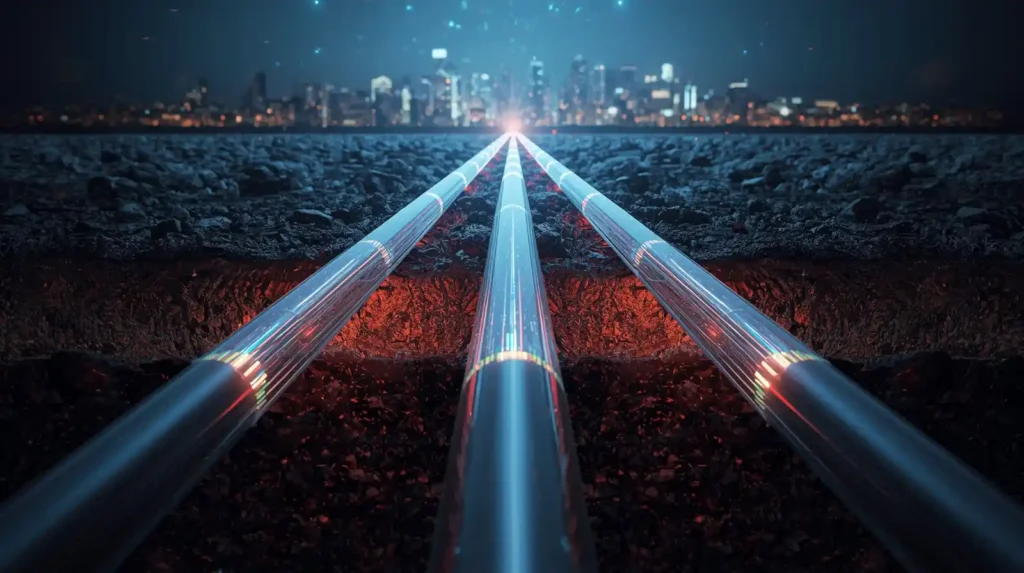
An underground fiber optic cable is designed to transmit digital information through light. Each cable contains fine strands that carry data signals across large distances almost instantly. The fiber is surrounded by multiple protective layers coatings, jackets, and insulation to prevent damage from moisture, pressure, or temperature changes.
These underground systems connect data centers, communication towers, businesses, and homes. Because they’re beneath the ground, they stay safe from environmental elements and can serve communities for decades with minimal upkeep.
Advantages of Installing Underground Fiber Optic Cable
The benefits of going underground extend beyond protection. Here are the main reasons why businesses and service providers prefer this system:
- Weather resistance: Underground cables don’t get knocked down by wind or rain.
- Improved safety: With no wires exposed, electrical hazards are reduced.
- Cleaner look: Neighborhoods look tidier without overhead lines.
- Long lifespan: Buried fiber can last over 30 years with little maintenance.
- Stable connection: Light signals travel smoothly through protected pathways, avoiding interference.
By keeping cables below ground, you eliminate most risks that cause downtime or poor connectivity.
Step-by-Step Process of Underground Fiber Installation
Building an underground fiber system requires planning, skill, and precision. Professional installers follow these general steps:
- Site survey and design: Engineers map the route, checking soil conditions, water tables, and existing utilities.
- Permits and safety checks: Teams obtain local permits and mark other buried services to avoid accidental hits.
- Trenching or boring: A narrow trench is dug, or in developed areas, directional boring is used to minimize surface disruption.
- Conduit placement: A strong underground fiber conduit is installed to house the fiber cable.
- Cable pulling: The fiber is gently inserted into the conduit using special equipment.
- Splicing and connection: Technicians join cables at connection points and seal them securely.
- Testing and activation: The network is tested for signal strength and performance before it goes live.
This careful process ensures the system is safe, long-lasting, and performs flawlessly.
How Deep Are Fiber Optic Lines Buried and Why It Matters
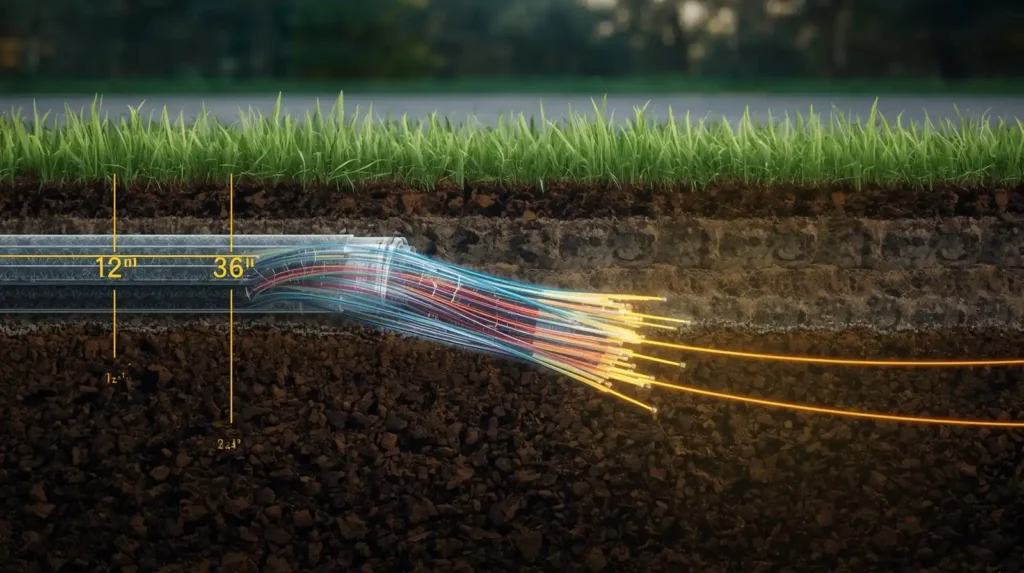
The depth of fiber optic cable varies depending on soil and environmental conditions. In residential areas, cables are usually buried between 12 and 24 inches deep. In commercial or high-traffic zones, they may go deeper sometimes up to 36 inches.
The minimum depth for fiber optic cable underground is determined by local regulations to keep it safe from digging, construction, or heavy machinery. Correct depth ensures long-term safety and reduces the risk of accidental damage during landscaping or roadwork.
Choosing the Best Underground Fiber Conduit System
A good conduit system protects the cable like a strong armor. Fiber in conduit means the cable is housed inside durable tubing made of PVC or HDPE. This method shields the fiber from rocks, water, and soil pressure.
Using underground conduit for fiber optic cable also simplifies upgrades or repairs. If a cable ever needs replacement, technicians can pull a new line through the existing conduit without re-digging the area. The conduit also helps maintain ideal bending and spacing, which preserves signal quality.
Best Practices for Burying Fiber Optic Cable Safely
Burying fiber optic cable takes precision and attention to detail. Here are best practices followed by professionals:
- Always check for underground utilities before digging.
- Use clean, dry trenches to avoid water intrusion.
- Install warning tape above the conduit to alert future workers.
- Compact the soil gently to protect the fiber from pressure.
- Record and mark the cable route for future reference.
These steps ensure that buried fiber systems remain safe and functional for decades.
Fiber in Conduit vs Direct Burial Installation
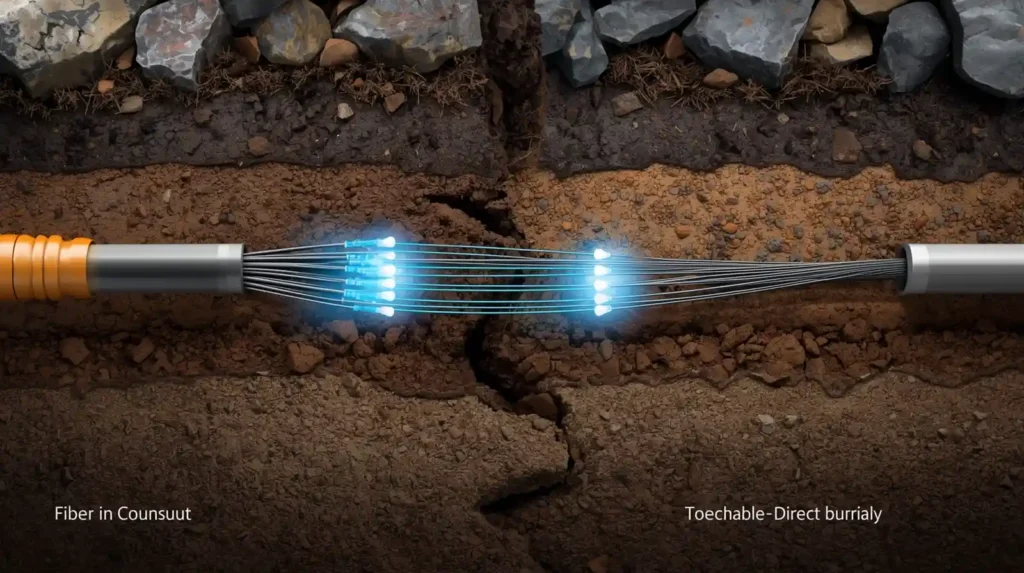
When it comes to installation, there are two main methods:
- Fiber in Conduit: The cable is placed inside a protective tube. It’s slightly more expensive but offers top-level protection, easy maintenance, and longer lifespan.
- Direct Burial: The fiber cable is buried directly in the soil without a conduit. It’s cheaper upfront but more vulnerable to damage from moisture or shifting ground.
For long-term reliability, fiber in conduit systems are generally the better choice, especially in commercial networks or large housing areas.
Heritage Cabling – Experts in Underground Fiber Optic Installation, Dallas TX
When it comes to professional installation, Heritage Cabling stands out for experience, accuracy, and reliability. The team uses advanced tools, precise mapping systems, and quality materials to install underground fiber optic cable systems that perform perfectly for years.
Whether you’re building a new property, upgrading your network, or connecting multiple buildings, their experts handle every step from trenching to testing with full attention to safety and compliance.
The Future of Underground Fiber Optic Networks and Smart Cities
The future of connectivity depends on strong underground infrastructure. As more cities adopt smart technologies like automated traffic lights, electric vehicle stations, and smart homes high-capacity underground fiber becomes essential.
These cables support cloud systems, 5G towers, and data centers, powering everything from healthcare to education. With underground fiber, communities gain faster, cleaner, and more dependable digital access, forming the foundation of tomorrow’s smart cities.
Contact Heritage Cabling today to discuss your project and learn how professional underground fiber optic installation can future-proof your connectivity for years to come.

